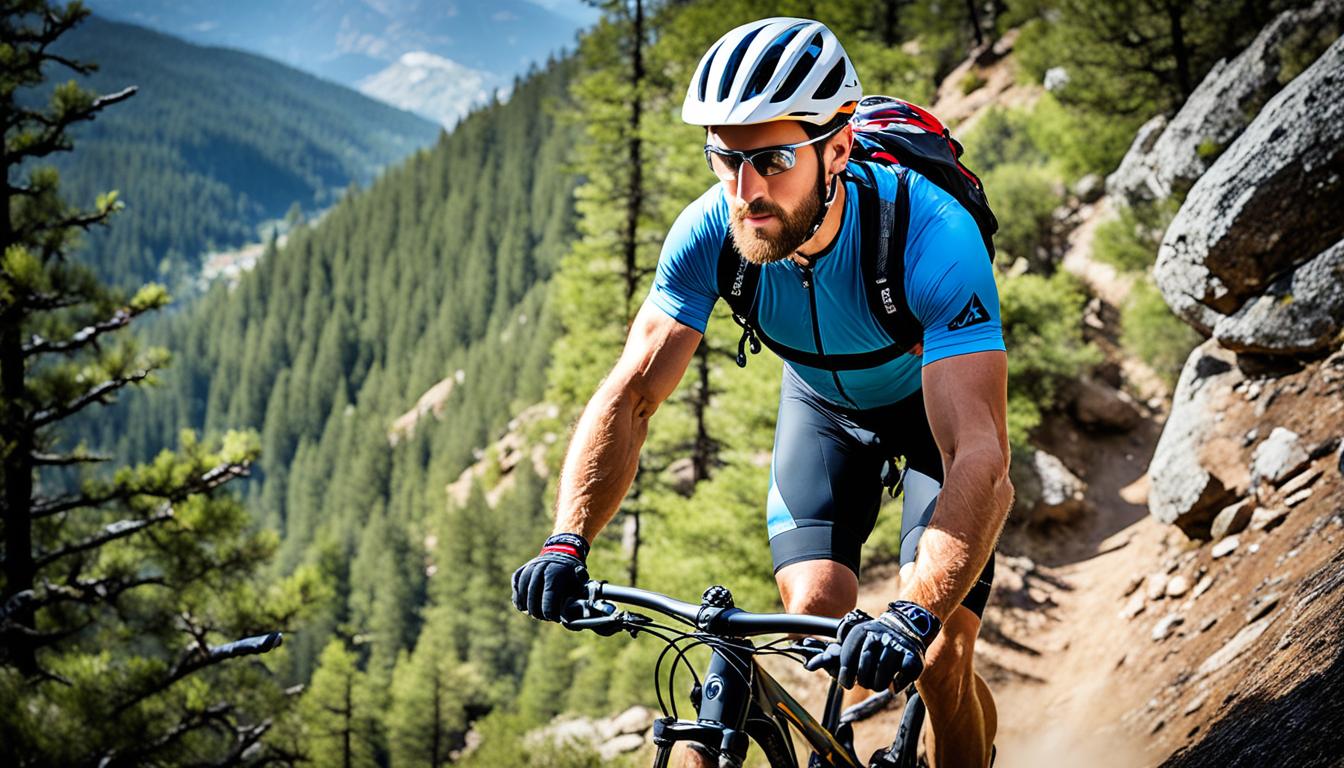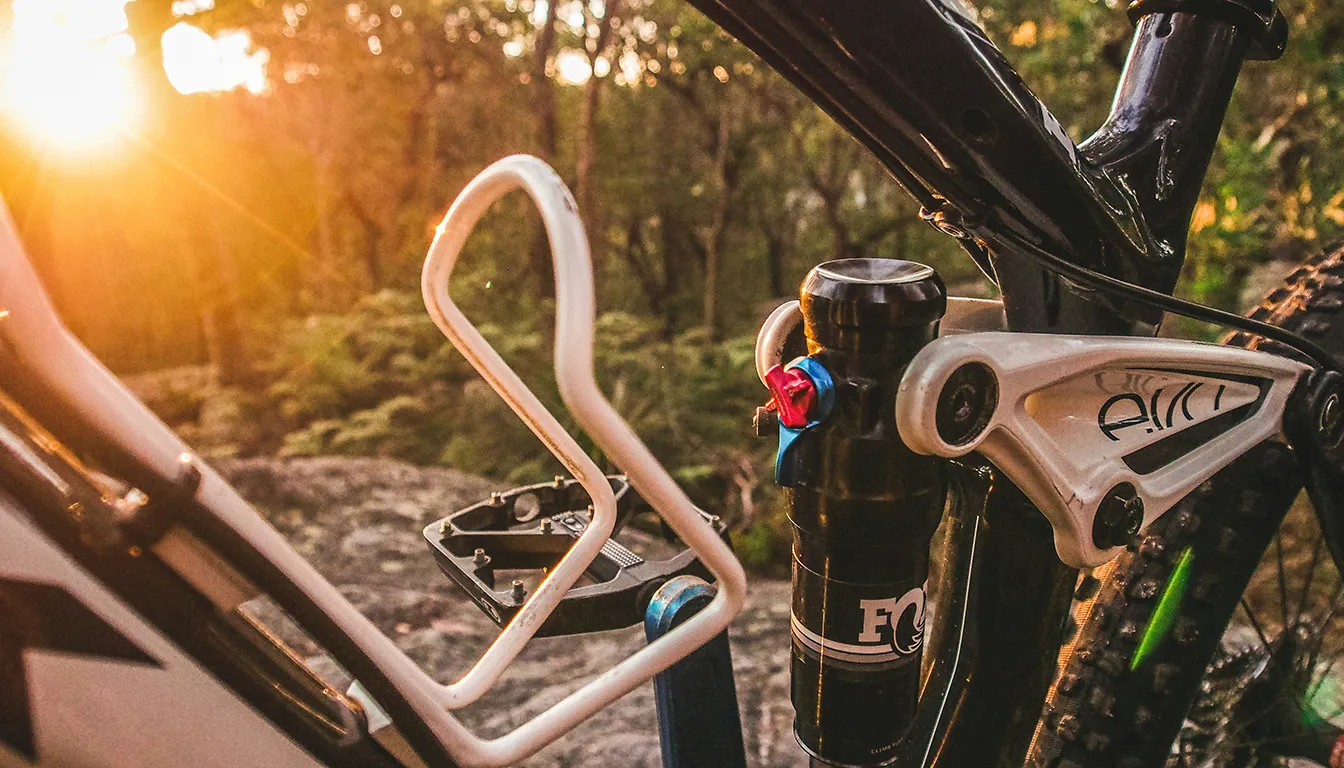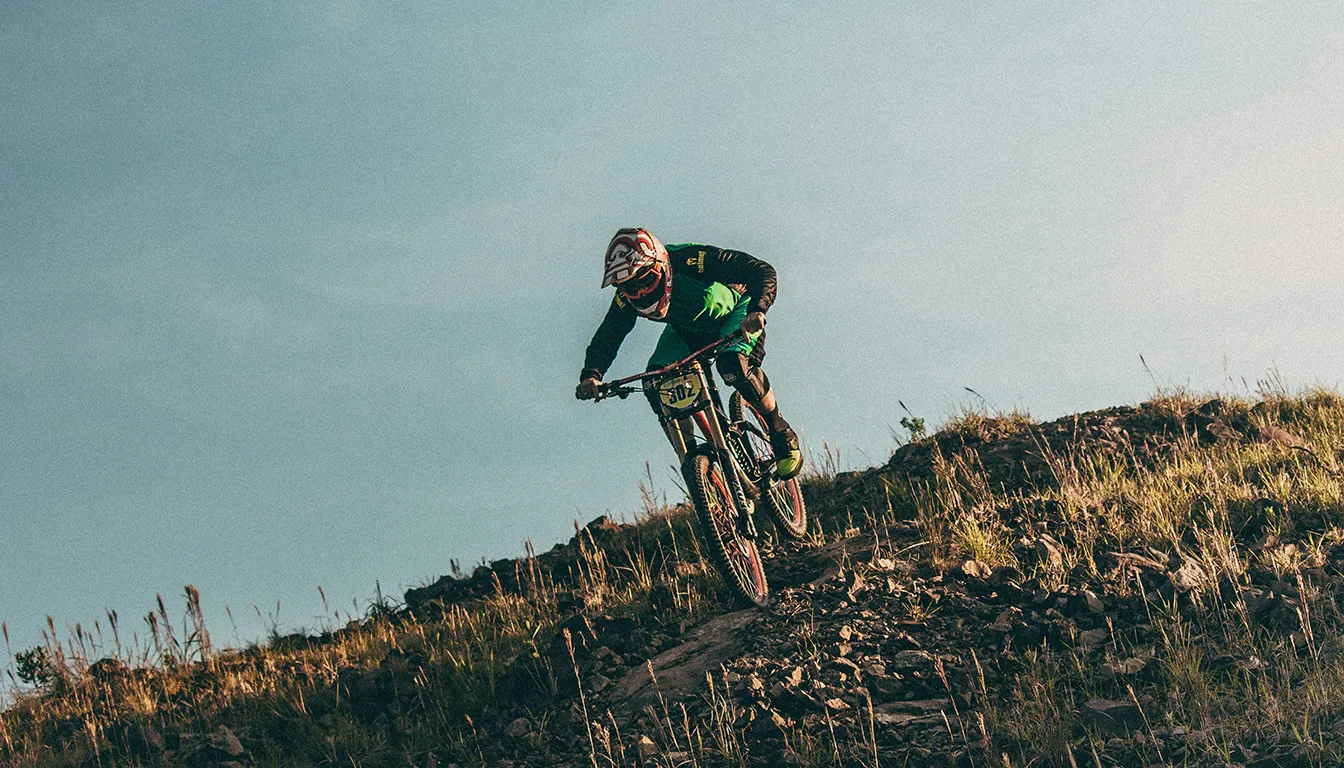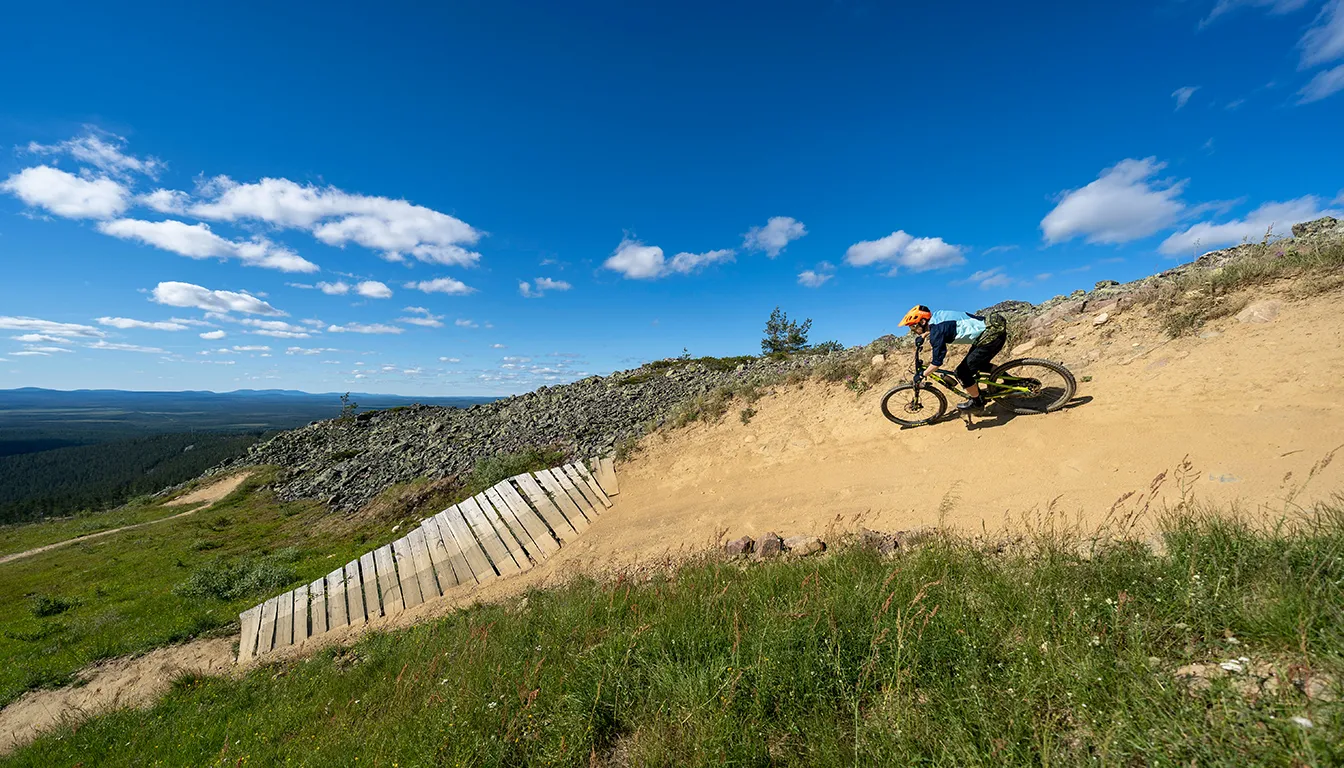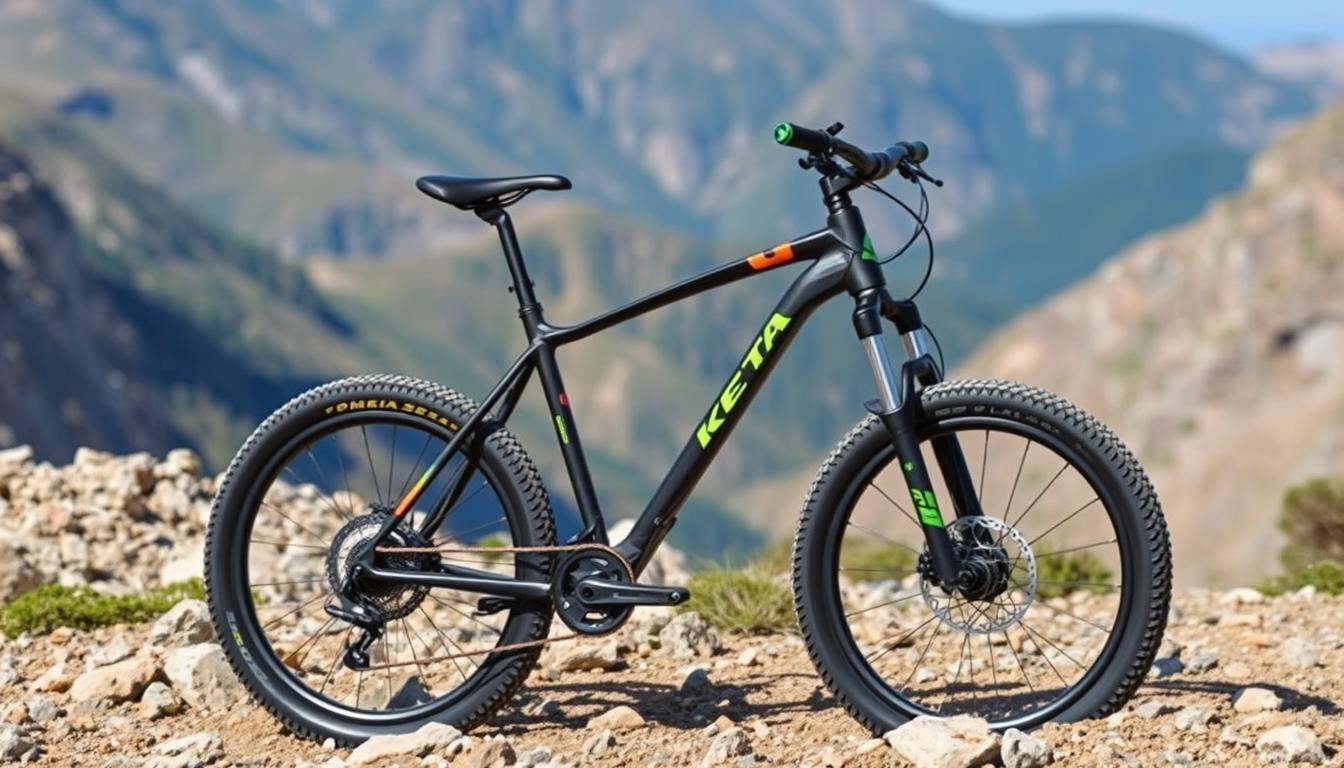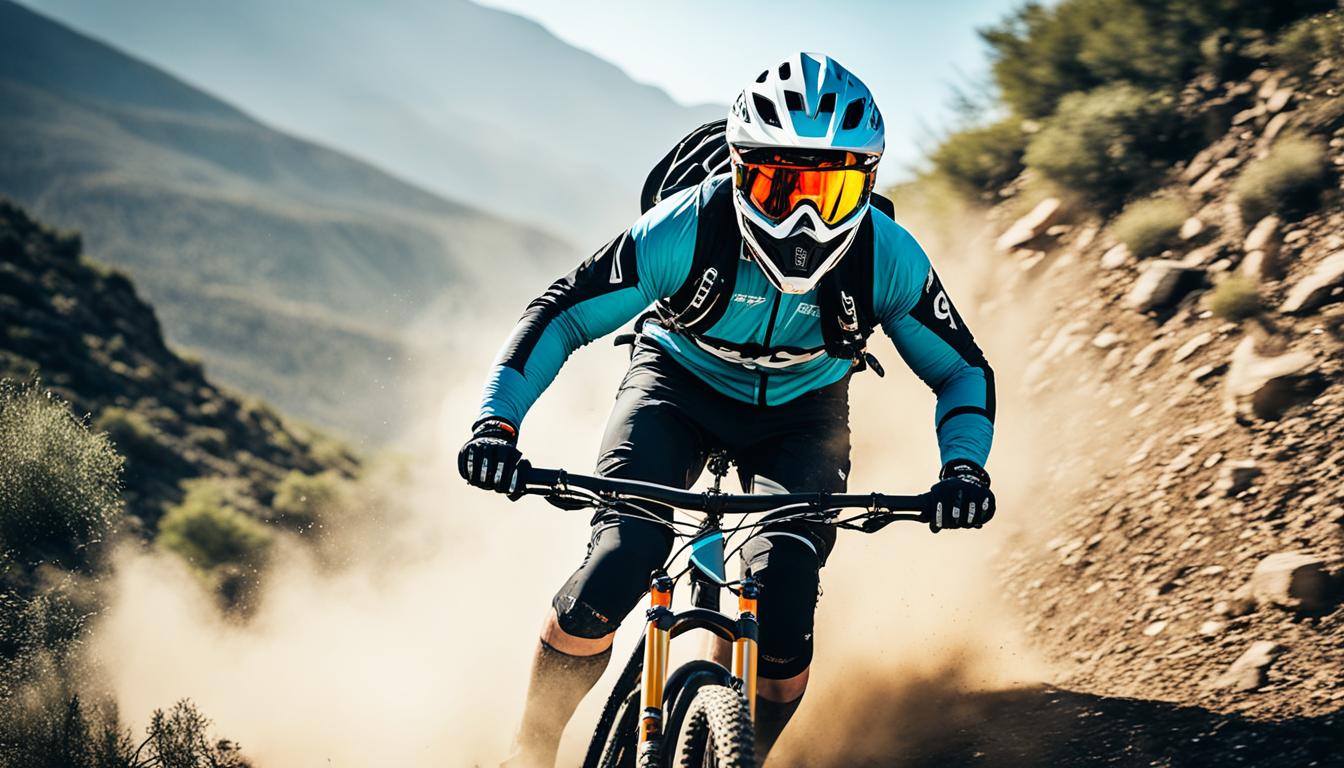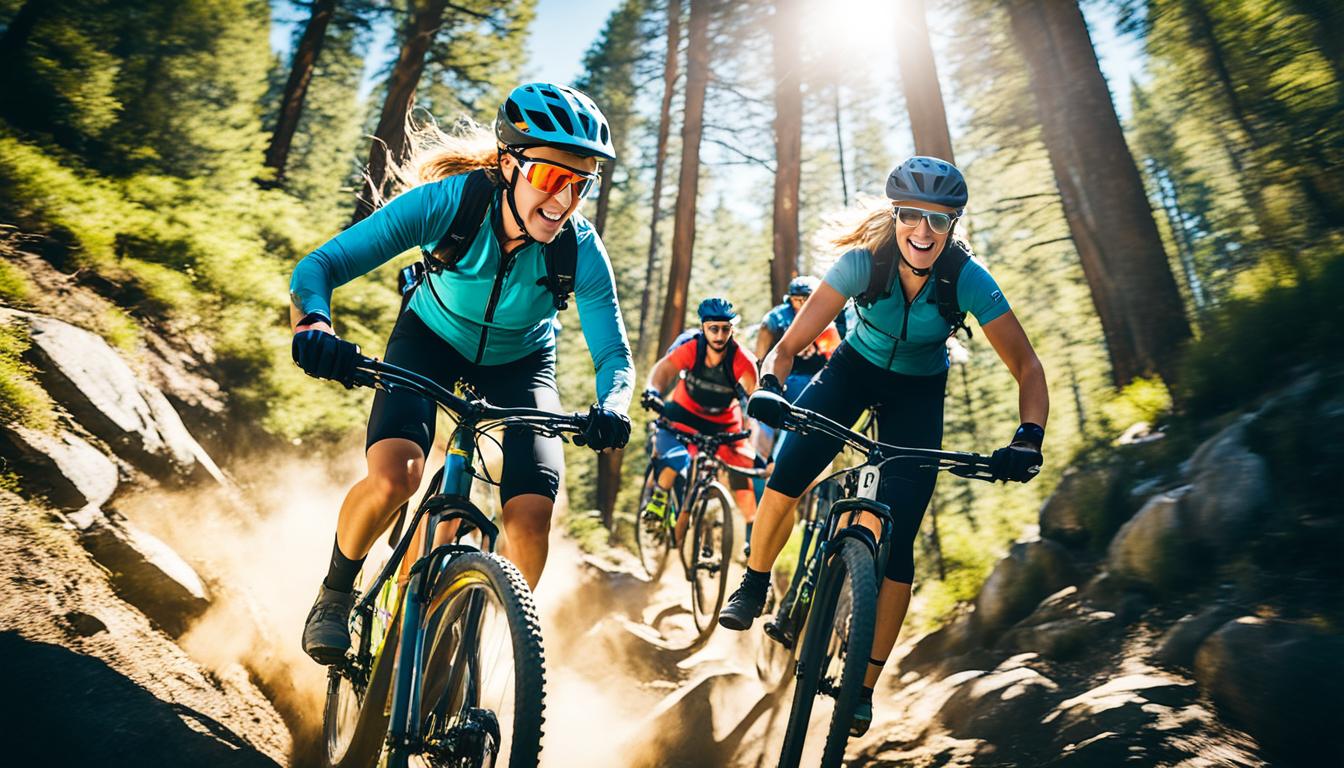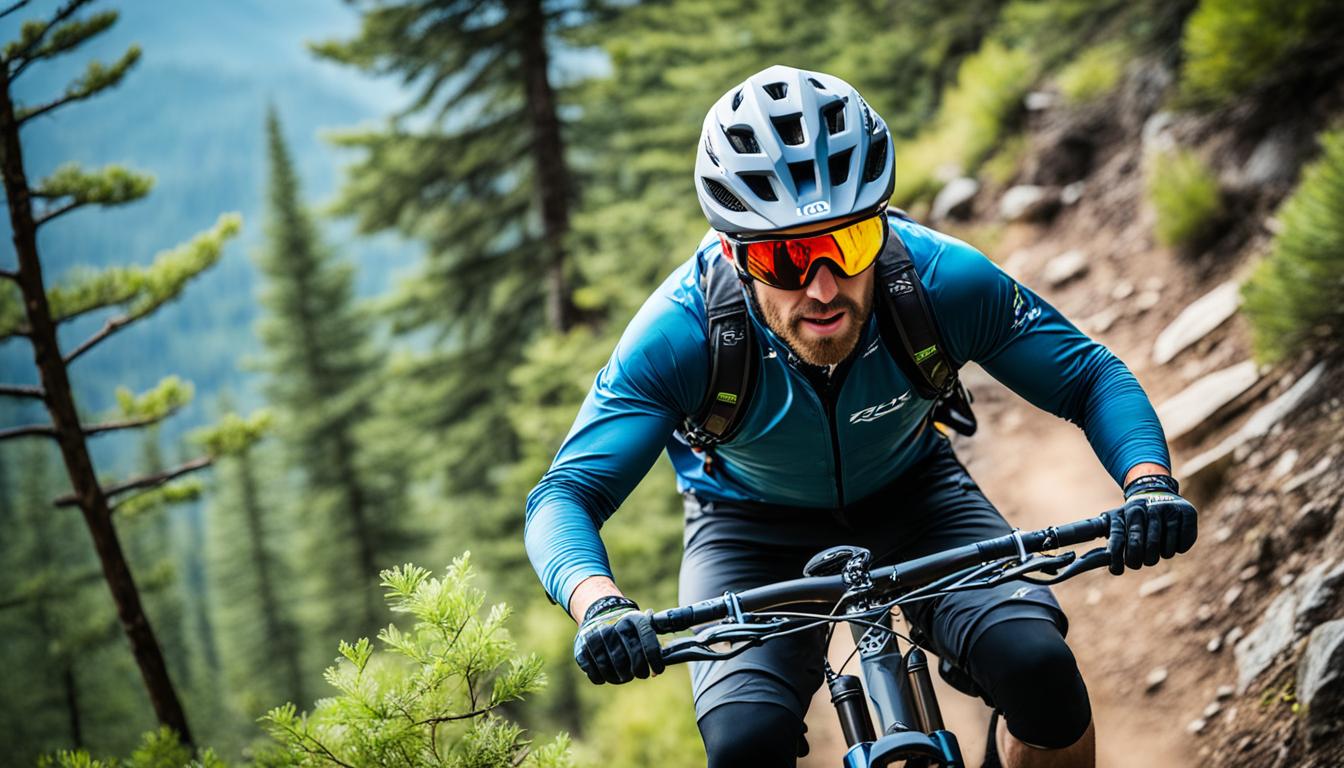Welcome to the ultimate guide for advanced enduro mountain bikers! This article is tailored for riders wanting to up their game. It’s an exciting blend of technical climbs and thrilling descents, where details matter.
As you refine your skills, you’ll learn key tips. These include optimising your bike setup, mastering the trails, and boosting endurance. With these advanced techniques, you’re set to take on tough terrains and improve like never before.
Understanding Enduro Mountain Biking
Enduro mountain biking is now a major part of the cycling world. It suits those who love both uphill and downhill rides. The bikes used have special features that show this blend of climbing and descending.
The Evolution of Enduro Riding
Enduro biking started in the 1980s in California as an exciting sport. Cyclists tackled thrilling trails, setting the stage for a new bike category. With better bikes and trails, enduro has grown. Races now last up to three days and have different stages.
Key Characteristics of Enduro Trails
Enduro trails stand out from other mountain biking types. They offer unique challenges. Trails feature:
- Technical terrain with steep descents and large climbs
- Multiple timed sections during a race, typically ranging from four to eight stages
- Variety of trail types, accommodating both beginner and advanced riders
- Accessibility for riders of all skill levels, compared to specialised downhill tracks
The trails keep evolving to include features like singletrack, rocks, and smooth descents. This keeps riders engaged and eager for more.
| Trail Type | Difficulty | Typical Features |
|---|---|---|
| Cross-country | Beginner to Intermediate | Mellow grades, less technical |
| Enduro | Intermediate to Advanced | Big climbs, steep descents, technical features |
| Downhill | Advanced | Heavy bikes, steep terrains, specialized tracks |
These points show the excitement and challenges in enduro mountain biking. It’s a sport that keeps evolving and growing.
Best Practices for Bike Setup
Getting your bike setup right can really boost how well you do and how comfy you feel. Paying close attention to things like suspension, gear ratios, and how your bike fits you is key, especially in enduro biking. This way, you can go from having a so-so time to an amazing one.
Choosing the Right Suspension Settings
The suspension is super important for a smooth ride and being comfy. Getting the suspension settings right for your weight and how you ride can make a big difference. Top riders like Dan Atherton choose high-quality forks, for example, the Fox 36. It lets you tweak small and large bumps settings for a custom feel. If you’re new, try different settings to see what feels best. You want it to soak up bumps but still be lively.
Optimising Gear Ratios and Tyre Pressure
Talking about gear ratios, it’s all about finding what works best for uphill and downhill. The right choice helps you use less energy going up and more control going down. Also, keeping your tyres at the right pressure helps with grip and stability. Thinking carefully about these things can make biking much more fun, so these bike setup tips are gold.
Importance of Bike Fit
Getting your bike fit for enduro spot on is crucial. The right fit means better control and efficiency when you’re out on tough trails. You need to tweak your saddle height, handlebars, and how far you reach to feel good while riding. This lets you concentrate on the ride, not on aches and pains. Using a bike fitting service can give you adjustments that are just right for you.
For even more advice on enduro race prep, take a look at these essential tips. They cover things like training for endurance and keeping your bike in tip-top shape.
| Aspect | Importance | Adjustments |
|---|---|---|
| Suspension Settings | Ensures optimal handling | Adjust preload, compression, rebound |
| Gear Ratios | Increases pedalling efficiency | Select ratios suited for terrain |
| Bike Fit | Enhances control and comfort | Adjust height, reach, and position |
Enduro Mountain Biking for Advanced Riders
Being an advanced enduro rider means mastering key skills. These skills let you enjoy the trails more and improve your performance. By developing them, you can tackle technical descents and tricky features confidently.
Essential Skills for Enduro Riding
Advanced enduro riders need a strong skills base. You should work on:
- Cornering: Being precise in cornering boosts your speed and stability.
- Climbing Techniques: Climbing well depends on how you position your body and pedal.
- Riding Over Obstacles: Getting over rocks and roots smoothly makes a huge difference.
- Braking Skills: Good braking keeps you in control and boosts confidence on downhills.
Practising these skills prepares you for the trail’s challenges. Consider bespoke coaching to polish your techniques. Coaching takes your riding higher, usually costing around £100.00 for a two-hour session. Look out for discounts on longer sessions.
Technical Techniques for Handling Steep Descents
Success on steep descents hinges on certain techniques. You need to control your speed, position your body correctly, and use your bike’s suspension right. Essential strategies include:
- Proper Body Positioning: Lean back and bend your elbows slightly.
- Speed Management: Use both brakes smartly to keep control.
- Looking Ahead: Keep your eyes on the path to spot obstacles early.
Using these strategies will boost your downhill skills. Every ride is a chance to practise and improve. Checking out resources like mountain biking tips can teach you more about tackling challenging trails.
| Coaching Sessions | Price | Special Offers |
|---|---|---|
| 1-2-1 – 2 hours | £100.00 | N/A |
| 1-2-1 – 3 hours | £150.00 | Special Offer only £125.00 |
| 1-2-1 – 4 hours | £200.00 | N/A |
| Additional Participants (up to 4) | +£10.00 per person, per hour | N/A |
Investing in your skills is vital for conquering the thrilling challenges of enduro mountain biking.
Rider Positioning and Body Mechanics
Understanding how to position yourself on a bike is key to doing better on trails. Having the right posture can help you stay stable and in control. This is especially true on difficult paths and when going downhill.
Getting the Perfect Stance on Your Bike
To get the best stance, think about how you spread your weight. It’s important to balance your weight between the bike’s front and rear wheels. Doing this keeps your grip strong and makes handling easier, whether you’re going up or down hills.
Some top bike stance tips are:
- Keep your knees and elbows a bit bent to stay relaxed but in control.
- Place your feet solidly on the pedals. Use the balls of your feet for more stability and power.
- Change how you sit based on the terrain. Lean forward when going up and shift back when going down.
The Importance of Centre of Gravity
Your centre of gravity plays a big part in how well you handle your bike. Lowering it through the right positioning boosts your stability. This makes it easier to handle sharp bends and rough parts.
Keeping your body in tune with your bike has many perks. Knowing where you are in relation to your bike helps with technical moves. Riders who work on their positioning often see better race times and performance.
| Aspect | Impact |
|---|---|
| Weight Distribution | Enhances traction, improves handling |
| Knee and Elbow Positioning | Promotes better posture, control |
| Foot Placement | Ensures stability, power transfer |
| Centre of Gravity | Improves stability, aids in cornering |
Mastering Trail Features
Mastering different trail features boosts your mountain biking experience. Learning about jumps, drops, cornering, and varying terrain takes your skills higher. These aspects make you a confident and capable rider. You’ll find it easier to tackle challenging environments.
How to Tackle Jumps and Drops
Approaching jumps and drops mixes technique with confidence. Start by checking the jump’s height and angle. Get your body low on the bike for stability. As you hit the jump, compress your suspension to stay in control. Land smoothly by bending your knees and arms. Mastering jumps is key to a great mountain biking adventure.
Cornering Techniques to Maintain Speed
Proper cornering keeps your speed up on tough trails. Put your weight over the outer pedal as you turn for better grip. Lean into the curve with the bike. Use smooth power to keep up speed through the turn. Getting these cornering skills down ensures a thrilling ride.
Adapting to Varied Terrain Types
Adapting to various terrains matters for mountain biking success. Each type, like rocks, gravel, or mud, offers unique challenges. Understanding trail features boosts confidence and skill on different surfaces. Shift your weight and change your style to match the terrain. Using tips from the best mountain biking trails helps improve your abilities.
Building Endurance and Strength
For advanced mountain bikers, building both endurance and strength is key. A good training plan helps you manage long rides, steep climbs, and tough descents. This helps improve your biking skills.
Effective Training Regimens for Endurance
A focused strength programme improves your biking. Interval training and resting are important for stamina and fitness. Strength is vital for mountain biking success.
Gym routines with specific exercises boost muscle strength. Walking lunges, push-ups, deadlifts, and side planks help. Doing these 3-4 rounds, twice a week for a month, brings improvement.
Crosstraining: Incorporating Other Sports
Cross-training enhances your biking by adding skills from other sports. Running, swimming, and yoga improve flexibility and stability. Dee Tidwell’s 30-year experience offers valuable training insights.
Programmes like Ultimate Enduro Training and MTB STRONG boost your game. Good training builds physical and mental strength. Dedicated training and expert advice improve your biking. For more tips, check this article on mountain biking.
Conclusion
As we wrap up our journey through advanced enduro biking, we see it’s not just about skill. Understanding your bike and how you fit with it is key. These advanced enduro tips are designed to boost your trail abilities, no matter your level.
Choosing the right gear matters a lot for improving your mountain biking. A good bike fit, knowing how to position yourself, and training hard are crucial. With over 5 million mountain bikers in the UK, learning from others is beneficial. It helps both newbies and pros tackle enduro biking challenges.
The mountain biking community is always changing, and so should your methods. Keep revisiting the fundamental ideas of enduro biking. This will help you handle different terrains better and ride with more confidence. Every ride is a chance to get better. Using these strategies will surely improve your mountain biking experience.
FAQ
What suspension settings should I use for optimal bike performance?
Choosing the right suspension settings relies on your weight, how you like your ride, and the trail. Tweak preload, compression, and rebound to get the best control and comfort over different grounds.
How can I improve my cornering skills?
To get better at cornering, work on your body’s position and keep your centre of gravity low. Support yourself with your outside foot. Lean into turns and look ahead to keep your speed and balance.
What is the best way to approach jumps and drops?
Hit jumps and drops at the right speed. Make sure you’re well-balanced. Bend your knees before the jump to prepare, aiming for a smooth landing by keeping your suspension and body in sync.
How can I build endurance for enduro mountain biking?
Build endurance with a plan that includes long rides and interval training. Add strength exercises too. Also, mix in rest and recovery to stay fresh and improve your performance.
What is the importance of bike fit in enduro riding?
The right bike fit improves comfort and control, especially on tough tracks. It’s crucial to adjust your saddle, handlebars, and reach to match your body for the best ride.
Can I benefit from cross-training for mountain biking?
Absolutely, cross-training boosts strength, flexibility, and general fitness, making you a better rider. Combining biking with running, swimming, or yoga can greatly enhance your abilities on the trails.
What are the key characteristics of enduro trails?
Enduro trails are a mix of technical uphill and downhill, with terrain that includes roots, rocks, and tight turns. Knowing these details helps with planning and riding better.
What essential skills should I master for advanced enduro riding?
For advanced riding, focus on upping your game in technical climbs, navigating obstacles, and mastering descents. Always practice to improve your skills and confidently face challenging trails.
